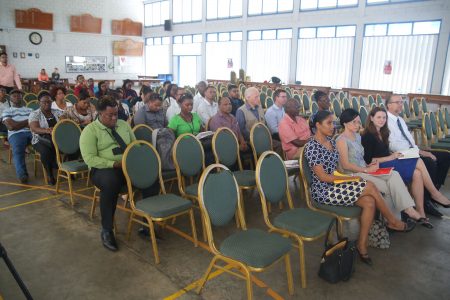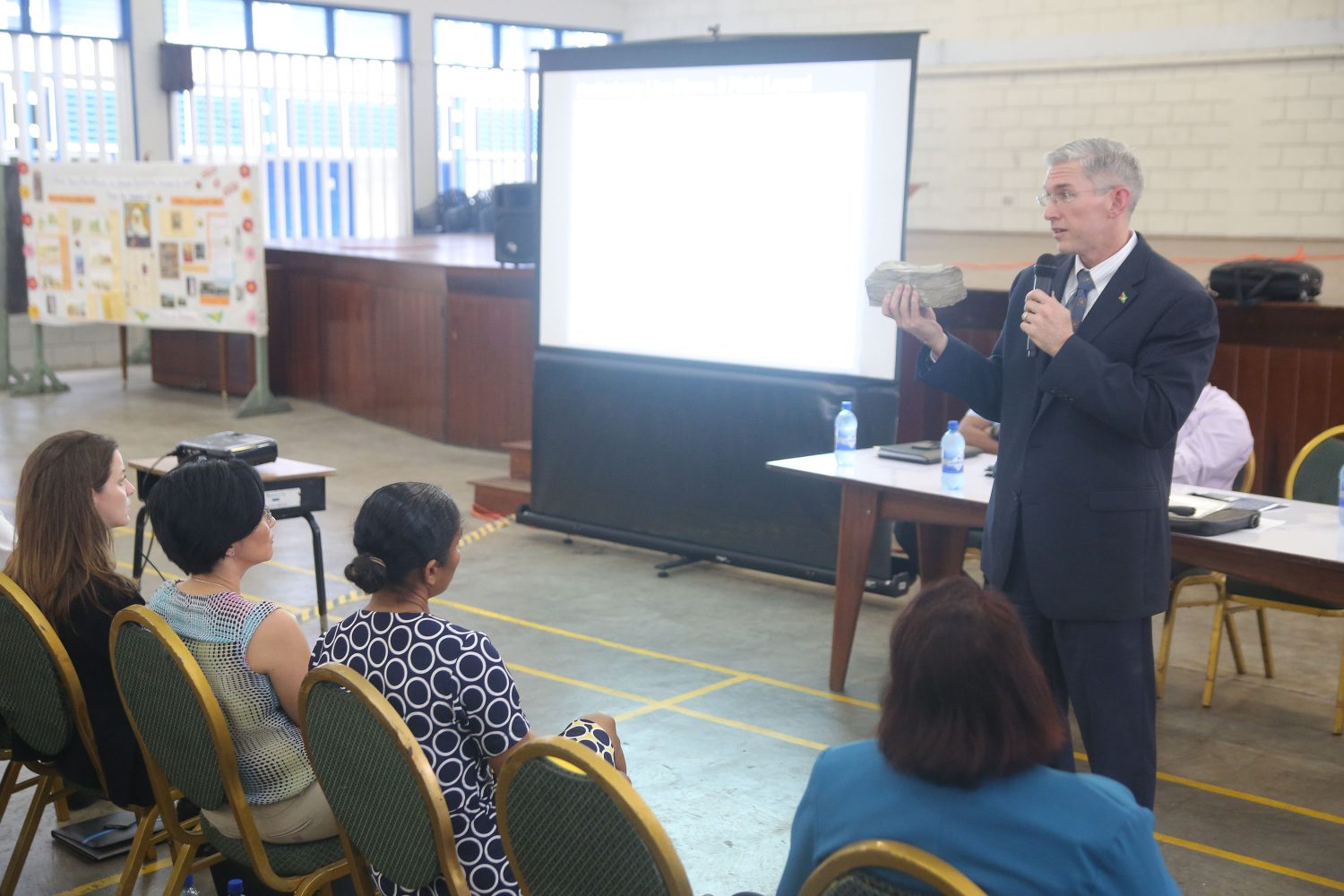How ExxonMobil’s Liza Phase Two Development Project will affect the marine life and the plans for the management of the hazardous waste that will be produced were paramount among the concerns raised at a public scoping meeting held in Georgetown on Monday.
The Environmental Protection Agency (EPA) held the meeting at the Marian Academy yesterday afternoon but attendance was less than expected, with only half of the seats being filled.
Nevertheless, the majority of persons who spoke and made suggestions expressed concern about how the project will affect marine life and how the country and company intend to deal with the hazardous waste that will be produced.
Country Manager of Esso Exploration and Production Guyana Limited (EEPGL) Rod Henson gave a brief presentation on the company’s plans for the Liza Phase Two Development, which he said should commence production in 2022, if the production licence is granted.
Mike Persaud, the company’s safety and health officer, also made a brief presentation and highlighted that some 4,000 to 5,000 tonnes of hazardous waste are expected to be discharged annually, which would be brought to shore to be disposed of in a proper manner.

While persons were hesitant to make comments and suggestions, a woman, who identified herself as Akeisha Adonis, opined that a specific example of a method that will be used to decontaminate the waste that will be coming on land should be stated clearly in the EPA’s Environmental Impact Assessment (EIA).
Her question was followed up by a man, who questioned who was going to cover the cost of disposing of the hazardous waste, whether the company or the country, and what process would be used.
In terms of its effects on marine life, Allison Butters-Grant, who said she was representing the fishing industry, suggested that the EIA include a study of where fish can be tested for levels of mercury. She also said that the study should include how marine traffic will be affected since other vessels will also be using the waterway.
It was also suggested that the study include how the project will affect the migration pattern of some species of fish.






